Insulation for warm water floors: rules for selection and installation
Equip a system of water underfloor heating in a country house and it's time to lay the insulation substrate? You must admit that among the variety of offers of insulating materials offered by manufacturers, it is sometimes not easy to make the right choice.
We will help determine which insulation for a warm water floor is better. Together with you we will deal with all the intricacies of the assembly of heat-insulating systems. We study the characteristics of popular materials, evaluate the key advantages and disadvantages.
Independent home masters with us will find installation instructions. To make it easier to navigate in the assortment offered by the building materials market, we selected rollers with recommendations on the choice of insulation and styling.
The content of the article:
The need for thermal insulation system
In any installation instructions for a water heated floor for independent masters, it is indicated that it is necessary to use a heater.
The insulation layer during the arrangement of the water floor performs several significant functions. It helps not only to ensure uniform heating of the room, but also, acting as a heat shield, can significantly reduce the energy loss of the system.
The screed, laid on top of the insulating layer, acquires the properties of a solid heat transfer element having a large surface area.
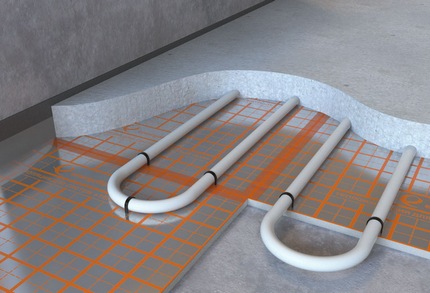
Due to the uniform distribution of energy, an ordered convection heat flow begins to move at the same speed and in one direction. As a result, evenly distributed heat waves will not form cold and hot areas on the floor, creating the most comfortable conditions for households.
In addition, due to the direction of the flow of warm air at one rate, it is possible to reduce the cost of electricity for operating the system, while maintaining its power unchanged.
Modern thermal insulation mats equipped with convenient snaps in the form of bosses, with the help of which laying and subsequent fixing of pipes can be done quickly and at the same time reliably.
Types of heaters under a water floor heating
There are many options for insulation for a floor water heating system in the modern market. The choice of the thickness of the substrate is limited only by the material capabilities of the owner and the technical parameters of the room.
Absolutely all heat-insulating materials impede the movement of sound waves through its thickness, and therefore are characterized by high rates of sound absorption.
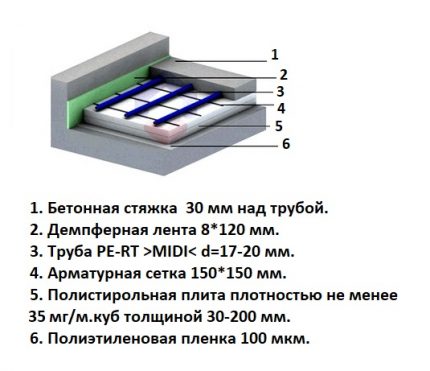
Regardless of the embodiment, special requirements are imposed on the heat-insulating material:
- it should have a low coefficient of thermal conductivity;
- perceive the load created by water-filled pipes;
- withstand the load laid on top of the pipeline screed;
- be resistant to dynamic influences that may occur during operation of the system, and after reducing the pressure, it should take its original form.
To achieve the desired effect allows the use of insulation material, the density of which is at least 35 kg / m3.
Option # 1 - Insulating boards
In rooms where the ceiling height reaches 260 centimeters and above, you can safely give preference to heaters on a rigid polymer base.
Styrofoam or Styrofoam. The basis for the manufacture of heat-insulating boards can be foam or expanded polystyrene.
The first option was created in a non-extrusion way, between its polymer cells there are channels for the passage of air and steam. Polyfoam is characterized by low specific gravity, as well as high vapor permeability.
In the manufacture of expanded polystyrene, the extrusion method is used, due to which the material cells are firmly sintered by the walls with each other.The vapor permeability of the insulation due to this is practically zero. But it has high strength and the ability to withstand significant mechanical loads.
The specific heat capacity of expanded polystyrene is slightly higher than that of foam. In the first case, it is equal to 1.34 kJ / (kg ° C), in the second, 1.26 kJ / (kg ° C) is calculated. The difference is small, but in the calculations it can significantly affect the total thickness of the floor heating system.
Standard size insulating Penoplex sheets, for example, 120 cm × 240 cm. GOST No. 15588-86 regulates width from 50 cm to 130 cm, length from 90 cm to 500 cm.
The density of the foamed polystyrene is 150 kg / m³, the same foam characteristic is 125 kg / m³. Depending on the specifics of production and the properties invested by manufacturers in the products, the characteristics of the materials may vary.
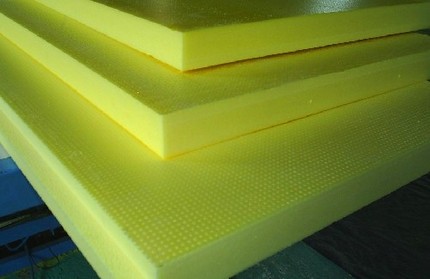
If you compare both types of material, the foam is disadvantageous in that it is inferior extrusion product in terms of density. Due to this, it is less resistant to deformation under the action of mechanical loads.
From this, its thermal insulation properties are significantly reduced. Polyfoam is recommended to be laid in the structures of the flooring systems between the logs.
Cork. Often in quality thermal insulation substrate under water and electric floors use a cork. Due to the special structure, which is a miniature prism of the correct shape, cork insulation is characterized by significant compressive strength, as well as the lack of adhesion to the cement mortar.
Due to the high cost of the material, cork coating is often chosen for residential premises, in which the base is already well insulated. Otherwise, to achieve the desired effect, you will need to purchase a technical cork with a thickness of at least 30 mm, which can significantly “hit the wallet”.
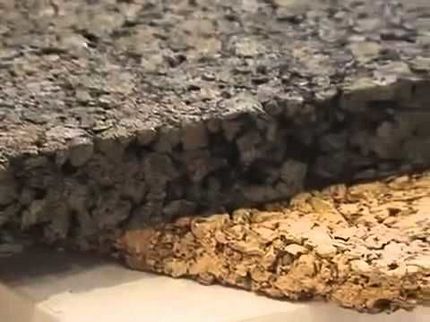
The only drawback of cork mats is that they are hygroscopic and are also available as single-component heat insulators. Therefore, when laying them, it is necessary to use an additional layer, which will provide steam and hydraulic protection.
Mineral wool. As an alternative affordable option - the use of mineral wool. It is available in the form of a flexible mat or hard plate.
Since when laying in a screed, mineral wool is crushed under weight, which negatively affects its heat-shielding properties, this material is also better to combine with flooring structures assembled from wooden logs.
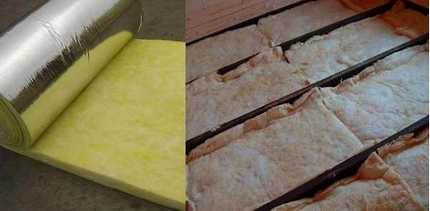
The only drawback of the material is the presence of penofol in the composition, which carries a danger to human health, and low moisture resistance. But properly executed waterproofing easily eliminates these shortcomings.
Option # 2 - profile systems with guides
Profile systems help facilitate the installation of water circuits. They are created using the technology of hydro-pellet stamping, as a result of which curly protrusions are formed.
Products are of two types: ordinary and laminatedwhich are covered with a vapor barrier film.

The basis for their manufacture is extruded polystyrene foam, which is created by extruding the molten composition through the holes of the extruder.
The polymer base is famous for its resistance to moisture and high mechanical strength.The thickness of the plate itself can vary from 10 to 35 mm. The main thing is that it be proportional to the thickness of the finish screed.
The lateral sides of each plate are equipped with locks, with the help of which it is convenient to fit the elements, forming a continuous field devoid of thermoacoustic seams.
The height of the cylindrical protrusions located on the surface of the plates reaches 20-25 mm. This is enough to conveniently place and securely fix water circuits with a diameter of 14 to 20 mm. Tightly planted rows of bosses eliminate the likelihood of a shift in the laid out contours during the pouring of the cement screed.
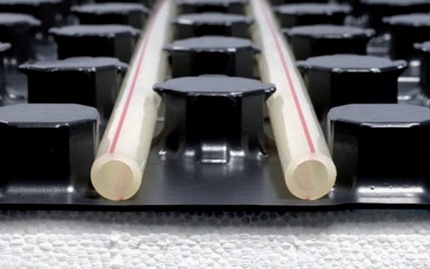
A feature of the installation of profile systems is that after laying water circuits in them, structures are poured on top with a small layer of adhesive. And only after a day or two, when the glue is completely dry, the system is put into operation.
Option # 3 - roll insulation
Roll insulation is chosen for rooms in which the distance to the ceilings is critical. Using thin foil layers with a protective lavsan coating, the thickness of the “pie” can be significantly reduced. The maximum thickness of such a substrate is only 9-12 mm.
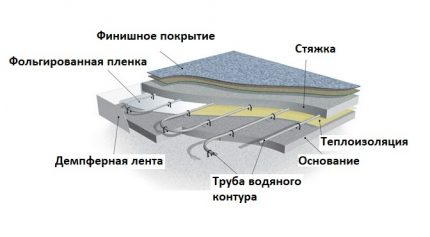
Roll insulation is equipped with a heat-reflecting shell of lavsan or heat insulation. Thin metallized materials perfectly reflect heat rays, due to which it is possible to safely reduce the thickness of the insulation without fear for a decrease in insulation quality.
An important requirement when using foil options is that it is impossible to use materials with aluminum foil in the installation of floors with a cement-sand screed. The alkaline environment of the mixture during pouring will simply corrode the aluminum layer.
However, if a protective film is applied over the foil, styling is possible. Use is allowed if the solution is mixed on gypsum, and not on cement powder. Some manufacturers replace the foil layer with lavsan or a polypropylene film, adding metallized inclusions to it.
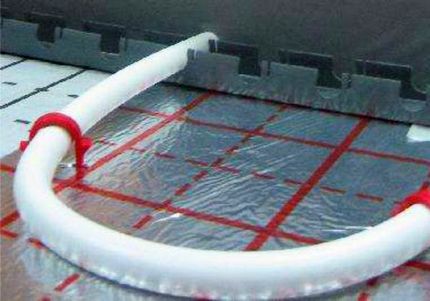
The disadvantage of foil materials is that they reflect heat well, but do not insulate well enough. If the floor is laid over the basement, thin roll solutions are not enough.
Some craftsmen solve the problem by laying hard insulation mats not in one layer, but in two. But at the same time, the sheets are placed so that the seams of the lower substrate are overlapped by the seams of the upper. This minimizes heat loss.
Features of laying insulation
The mounting pattern of the substrate depends on the type of materials used.But in any case, it must be placed on the most even surface.
No. 1 - plate laying technology
The substrate, constructed from slabs with an assembly chamfer, is assembled easily - according to the principle of the designer. Plates are conveniently customized and measured. You can cut the plates to the appropriate dimensions with an ordinary knife.
The ease of laying the substrate is convenient because during installation at any time you can change the configuration of the contours and the length of the pipelines. So that the plates of material during installation and operation do not move relative to each other, their joints are glued with construction tape.
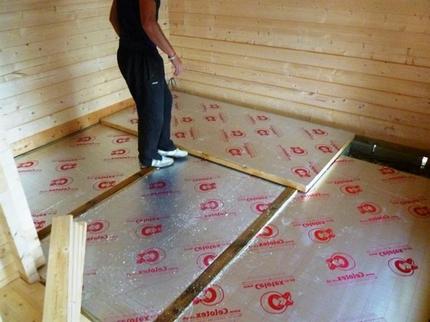
The sequence of actions when laying insulating boards:
- Foam slabs are placed on the cleaned and leveled base, fixing them with special plastic staples, anchor dowels or planted on the adhesive.
- On top of the laid and stacked plates, a foil layer is lined.
- The upper layer is lined with a reinforcing mesh, on which pipes are subsequently mounted.
If the concrete screed of the base floor is poured with significant deviations from the level or has rough cracks and bumps, or concrete slabs are laid with irregularities, it is better to build a frame before laying the substrate. To do this, collect wooden logs from a dry and even beam with a section of 50x50, 50x100 or 100x100 mm.
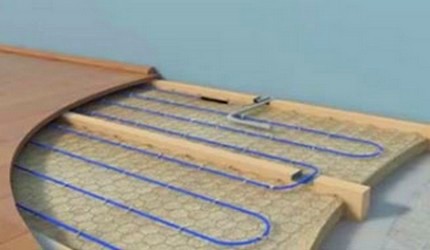
A distance of 60 cm between the lags is considered the best option, because with this "step" does not require the creation of an additional crate. The main thing is that the lags are located in one plane and lie strictly in level.
Thermal insulation boards must be tightly laid between the wooden logs. If there are cracks, they must be blown off with foam.
In laying plates of extruded polystyrene foam, it is necessary to observe some nuances:
No. 2 - installation of rolled materials
Laying of the rolled material is carried out on a carefully aligned base and fixed to the base base using tile glue or double-sided tape. Cutting strips of the required size is performed with ordinary stationery scissors.
To compensate for the thermal expansion of the screed, it is recommended to place the foil layer with a slight approach to the wall.
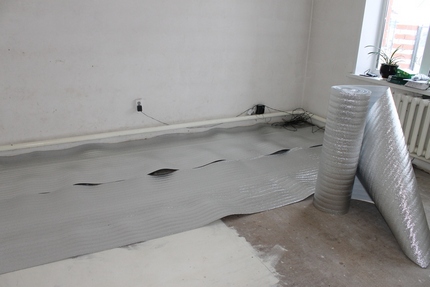
When laying rolled materials, they are guided by the marking of printed mounting markings. It determines the distance between the contours and makes it easier pipe laying. Typically, the roll materials at the edges have allowances of foil polymer film for the possibility of joining adjacent paintings.
When laying cuts, special attention is paid to temperature seams. To do this, the joints of the laid strips are glued with one-sided construction or metallized tape.If a cork coating is used as the substrate, then before laying it is necessary to take care of reliable vapor and waterproofing.
No. 3 - installation diagram for mats
The stage preceding the laying of the mats is the arrangement of film waterproofing. After laying it around the perimeter of the room, along the bottom of each wall, stick strips of damping tape.
On the prepared base, the mats are lined, fastening the plates together by means of a castle system. To reliably fasten plates of small thickness and light weight, the adhesive method is used and plastic harpoons are used.
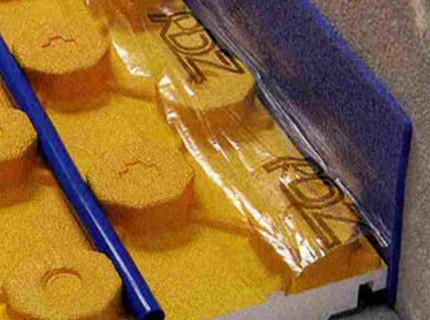
An important point: when laying mats it is not allowed to use metal fasteners, since it can damage the integrity of not only the heat insulator, but also the waterproofing.
Choosing the best base for a thermal insulation substrate depends on your capabilities. Yes, a good substrate is not cheap. But it will significantly increase the functionality of the equipped system of water floors.
Conclusions and useful video on the topic
Video # 1. The choice of insulation for cement screed:
Video # 2. A good example of laying mats:
Video # 3. Installation of roll insulation:
In order not to make a mistake in choosing a heater for a water floor, be guided by the technical characteristics of the room, taking into account not only the thickness of the product, but also the maximum allowable compression load.
Properly approaching the choice of a heat insulator and observing all the subtleties of installation, you can create a reliable foundation for arranging a functional floor water system.
Do you want to talk about how to choose and install insulation under the heating floor at home? Have questions or valuable suggestions? Please write comments in the block below.

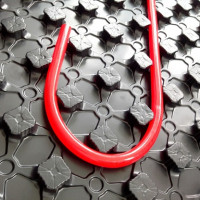 Mats for underfloor heating: selection tips + styling guide
Mats for underfloor heating: selection tips + styling guide 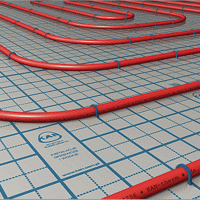 Laying schemes for a warm water floor: analysis of the most effective installation options
Laying schemes for a warm water floor: analysis of the most effective installation options 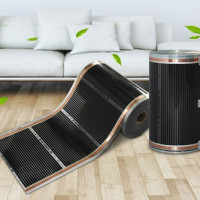 Infrared film for underfloor heating: types of films, how it works, laying rules
Infrared film for underfloor heating: types of films, how it works, laying rules 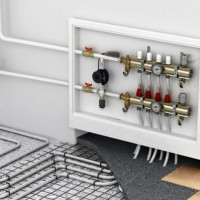 Water underfloor wiring diagram: versions and device manual
Water underfloor wiring diagram: versions and device manual 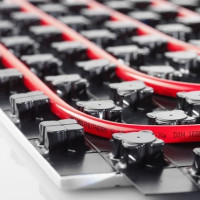 Underfloor underfloor underfloor heating: types, features of choice, laying rules
Underfloor underfloor underfloor heating: types, features of choice, laying rules 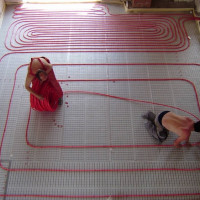 Calculation of pipes for underfloor heating: selection of pipes according to parameters, choice of laying step + calculation example
Calculation of pipes for underfloor heating: selection of pipes according to parameters, choice of laying step + calculation example  How much does it cost to connect gas to a private house: the price of organizing gas supply
How much does it cost to connect gas to a private house: the price of organizing gas supply  The best washing machines with dryer: model rating and customer tips
The best washing machines with dryer: model rating and customer tips  What is the color temperature of light and the nuances of choosing the temperature of the lamps to suit your needs
What is the color temperature of light and the nuances of choosing the temperature of the lamps to suit your needs  Replacement of a geyser in an apartment: replacement paperwork + basic norms and requirements
Replacement of a geyser in an apartment: replacement paperwork + basic norms and requirements
Maybe I'm a little old-fashioned, maybe even this is all from envy. I do not understand, in principle, the purpose of the underfloor heating in a private house (there is an option with wooden logs). Looked at the photos, a good insulation, why else heat it up? My house is private, the floors were laid on a 15cm layer of insulation mineral wool. And kra-so-that! Feet warm. I can understand how, again, from an article in an apartment building, comfort is brought about because of the cold contours on the floors. Well ... it's up to you.
Well, you know, there are different houses, as well as people. Someone on the insulated field can be comfortable, but someone even needs to unscrew the underfloor heating regulator to the maximum so that it is not cold simply. In addition, even the flooring is different, if it is a tile, for example, then you just can not do without a warm floor.
Insulation during the installation of underfloor heating is used in order to “not heat” the foundation when idle. That is, so that the heat does not go anywhere, but gets exclusively into the house. For example, I have a warm floor throughout the house, the insulation is also involved. Heating by electric convectors, and the whole system is tied to a thermostat, which can regulate the temperature in the house.
If you have not noticed, then the thermal insulation is laid directly under the pipes of the water circuit. This provides higher efficiency when using a water floor heating.
Igor, it’s all about saving finances while increasing efficiency. Insulation under the final floor protects from the cold from below, but it does not heat the floor itself. Heat is brought into the house by heating appliances. But what type they will be and where they will be located, all this will affect the indicators of profitability, optimality and personal comfort. The heat from the heater located under the feet is most comfortable for a person and is more evenly distributed along the height of the room, there is no excess heat under the ceiling in the presence of cold at floor level.